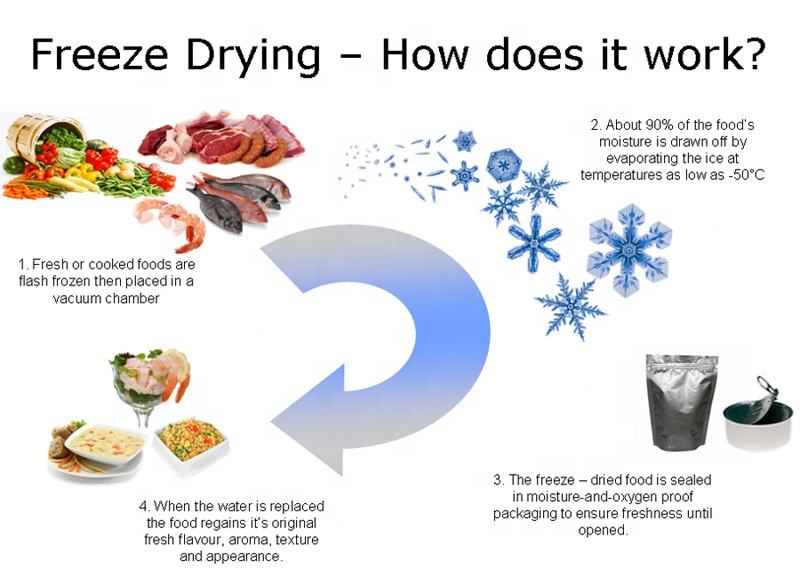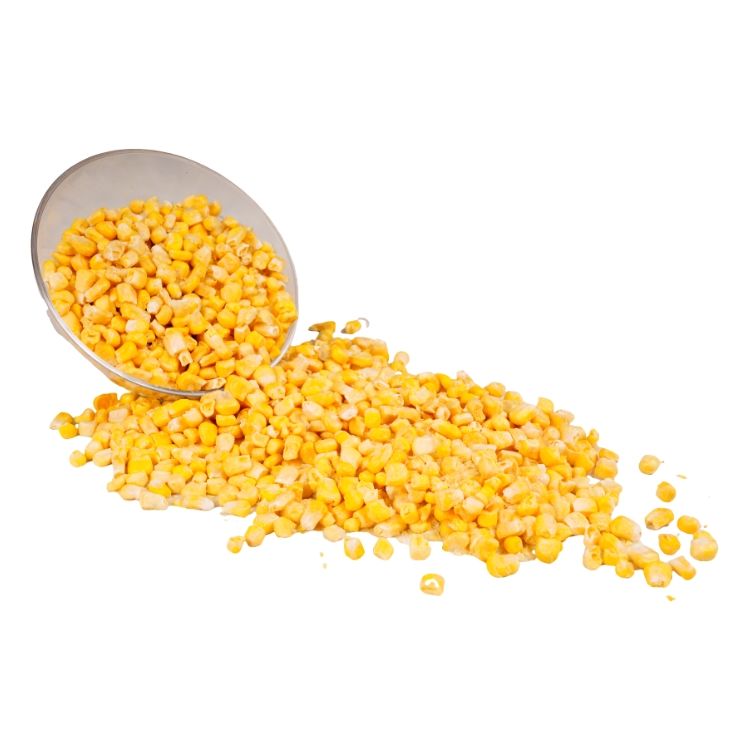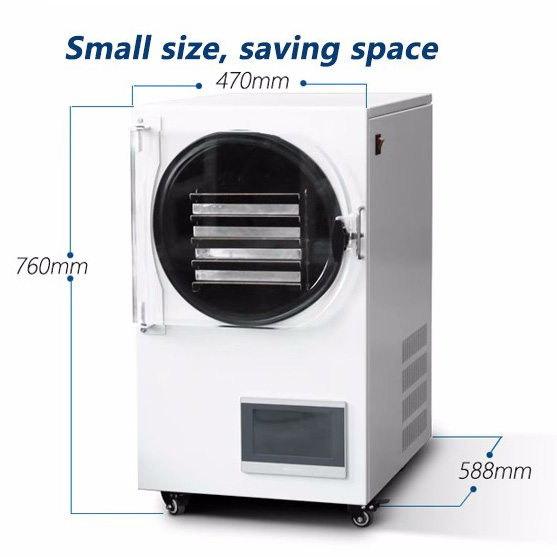The application of freeze-drying technology is becoming increasingly widespread, from home cooking to outdoor adventures, from emergency rescues to pet feasts. This great technology is playing an increasingly significant role. Many people are curious, what is the principle behind freeze-drying? What interesting phenomena occur during this process?

The Principles of Freeze-Drying
The Physical Principles Behind Freeze-Drying
Freeze-drying is a technique for removing moisture from an object at low temperatures. This process involves freezing the object (turning liquid water into solid ice), reducing the pressure, and then removing the ice by sublimation. Unlike the normal transition of moisture from liquid to gas, in this process, the moisture directly sublimates from solid to gas. Foods treated in this way are lightweight, have a long shelf life, and retain most of their nutrients.
The Physical Changes in Freeze-Drying
The process can be divided into three key stages:
- Freezing: The food is frozen into a solid, usually between -30°C to -50°C, ensuring that all the moisture in the food freezes into solid ice.
- Primary Drying: This stage begins by evacuating air from inside the freeze dryer to reduce the pressure. Meanwhile, maintaining a low-temperature environment allows the solid moisture in the food to bypass the liquid state, directly sublimating from solid to gas. This step is the most crucial part of the freeze-drying process, requiring careful control of temperature and pressure to maximally remove moisture from the food. Current professional home freeze dryers can do this very perfectly.
- Secondary Drying: After primary drying, most of the moisture has been removed, but a small amount still remains. The purpose of the secondary drying stage is to remove this remaining moisture. The temperature is gradually increased to promote further sublimation of the moisture, ensuring the lowest possible moisture content in the food.
After these three stages, all we need to do is open the door of the home freeze dryer to take out the delicacies we have been waiting for.

Tips and Precautions for Using Home Freeze Dryers
Choosing a Home Freeze Dryer
- Budget: Currently, the price of mainstream home freeze dryers ranges from $2,000 to $6,000, with small home freeze dryers priced between $2,000 to $3,000, medium freeze dryers between $3,000 to $5,000, and large home freeze dryers between $5,000 to $6,000. For specific prices, Please contact us.
- Capacity: Depending on the weight of the food you need to freeze dry each time, you can choose different models. For instance, our FK-04 can freeze dry 4KG of food at a time, FK-06 can handle 8KG, and FK-10 can manage 10KG. You can choose the suitable model based on your needs or send us a message, and we will recommend the most suitable model for you.
- Space: Home freeze dryers are medium to large household appliances, about the size of a household drum washing machine. If you have space requirements for appliances at home, you can opt for a smaller model, like the FK-04, which measures 58X47X76cm and is very compact, not occupying too much space in your home.
Using a Home Freeze Dryer
Home freeze dryers are not only used for food preservation but also widely used in making pet snacks, preserving flowers, DIY freeze-dried food, and more. Here are some suggestions for using a home freeze dryer:
- Pre-treat the Food: Cut the food into thin slices or small pieces to increase the surface area of the food, making it easier for the moisture to sublimate, speeding up the freeze-drying process, and allowing for more thorough moisture removal.
- Arrange the Trays: Ensure there is enough space between the food items so that the freezing air and drying air can flow freely. Additionally, since the freeze dryer has multiple trays, try to evenly distribute the food across the trays to help with uniform freeze-drying.

Optimizing the Freeze-Drying Process
Different foods have different moisture contents, so it’s essential to select different freeze-drying preset programs. You can find the best freeze-drying process for different foods through trial and error. We also provide preset drying options for common foods, allowing you to easily make delicious freeze-dried foods.
Monitoring the Freeze-Drying Process
Freeze-drying is a relatively slow process. Our home freeze dryers have transparent windows, allowing you to observe the food’s freeze-drying status at any time, making the most delicious freeze-dried food while avoiding incomplete drying or over-drying.
Preserving Freeze-Dried Food
The shelf life of freeze-dried food can be as long as 25 years, far exceeding that of traditional foods. However, it’s important to store the food in vacuum bags or airtight containers and keep them in a cool, dark place away from direct sunlight.
Cleaning and Maintenance
After freeze-drying, it’s necessary to clean the trays and the inside of the machine to remove food residues and prevent the growth of bacteria and odors. Additionally, it’s recommended to regularly check the door seals and vacuum tubes to ensure the vacuum system runs efficiently.
After understanding the principles and usage tips of home freeze dryers, are you also eager to try DIY freeze-drying your food? Come on, join us in making your favorite freeze-dried foods:
The Charm Of Freeze-Dried Candy: Unlocking The Door To A New World
Freeze-Dried Fruits – A New Choice For Healthy Life
Freeze-Dried Eggs: Locking In Nutrition And Health
Freeze-Dried Milk: A Nutritious And Healthy New Choice






